Umbilicaria virginis Schaer.
Bibl. Univ. de Genève, 36: 153, 1841.
Synonyms: Gyrophora stipitata (Nyl.) Branth; Gyrophora virginis (Schaer.) Frey; Umbilicaria rugifera Nyl.; Umbilicaria stipitata Nyl.
Distribution: N - TAA, Lomb (Rivellini 1994), Piem (Isocrono & Falletti 1999, Isocrono & al. 2003, Isocrono & Piervittori 2008), VA (Piervittori & Isocrono 1999).
Description: Thallus foliose-umbilicate, heteromerous, dorsiventral, monophyllous, rigid, more or less circular in outline, 1.5-4(-20) cm wide, attached by a more or less central holdfast. Upper surface ivory to light grey or brownish grey, dull, with sharp radiating ridges and coarsely pruinose near the umbilicus. Lower surface white to pink, smooth to minutely roughened, usually brown-black around the umbilicus, with dense, long, slender, white, branched rhizinomorphs; thalloconidia absent. Apothecia common, black, weakly omphalodisc, sometimes with several circular elevations, sessile to substipitate, up to 3 mm across. Epithecium black-brown; hymenium colourless; paraphyses mostly simple, with enlarged apical cells; hypothecium brown. Asci 8-spored, clavate, thick-walled, with an amyloid apical dome, Umbilicaria-type. Ascospores 1-celled, hyaline, ellipsoid, 10-15 x 5-8 µm. Photobiont chlorococcoid. Spot tests: medulla K- or K+ red, C+ red, KC+ red, P- or P+ orange. Chemistry: medulla with gyrophoric acid and variable amounts of stictic acid. Note: an arctic-alpine, probably circumpolar lichen found on wind-exposed siliceous cliffs, often in small niches and under overhangs, strictly limited to the nival belt in the Alps.
Growth form: Foliose, umbilicate
Substrata: rocks
Photobiont: green algae other than Trentepohlia
Reproductive strategy: mainly sexual
In underhangs rarely wetted by rain
Commonnes-rarity: (info)
Alpine belt: very rare
Subalpine belt: absent
Oromediterranean belt: absent
Montane belt: absent
Submediterranean belt: absent
Padanian area: absent
Humid submediterranean belt: absent
Humid mediterranean belt: absent
Dry mediterranean belt: absent

Predictive model
Herbarium samples
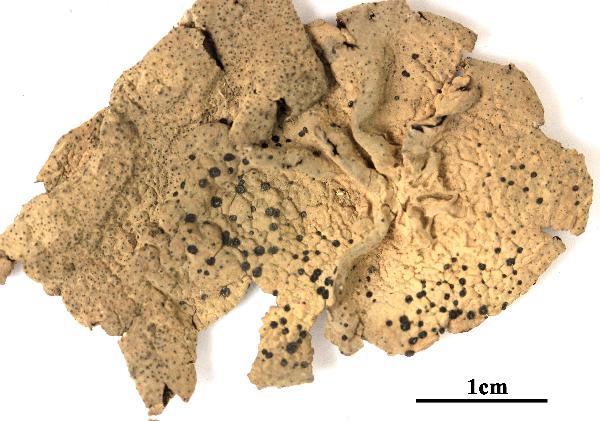

Felix Schumm - CC BY 4.0
[VZ2147], U.R.S.S. Asia centralis, Kirghiza: montes Titan-shan, iugum
Kirghizki khrebet, in valle fluminis Ala-Archa, 37 km ad australem ab
oppido Frunze, 2000-2200 m. Ad saxa silicea. Leg: Vašák, 29.04.1986,
det. A. V zda. EX A. V ZDA: LICHENES SELECTI EXSICCATI NR, 2147.


Curtis Randall Björk – CC BY-SA 4.0
Washington, Chelan County, Wenatchee Mountains Date: 2013-05-09 On cliff in dry conifer forest on slope
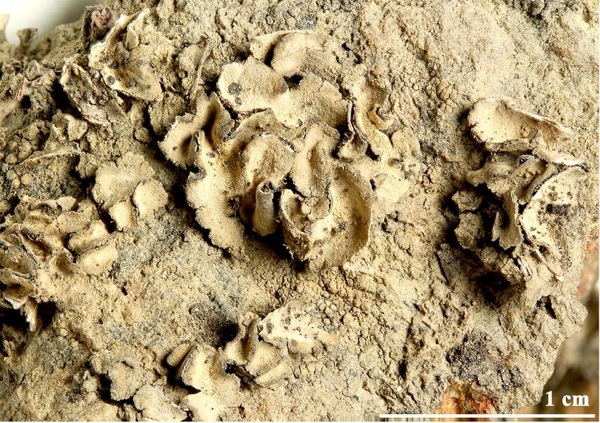

Felix Schumm - CC BY-SA 4.0
[GZU 165-88], Afghanistan, Prov. Kabul, Paghman Gebirge, oberhalb des Ortes Paghman, an der Talgabelung Cap-Darrah und Rast-Darrah, linke Talseite, 68°56’ E, 34°37’ N, 2550 m. An Silikatfelsen; gehemmte rasige Wuchsform. Leg. M. Steiner, 30.05.1970, det. E. A. Davydov, 10.2017.
Ursprünglich von J. Poelt (?) als cf. Umbilicaria aprina Nyl.
bestimmt
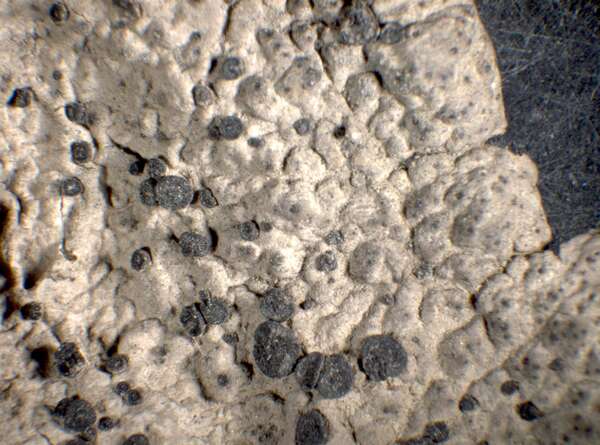

P.L. Nimis; Owner: Department of Life Sciences, University of Trieste
Herbarium: TSB (9936)
2001/12/05
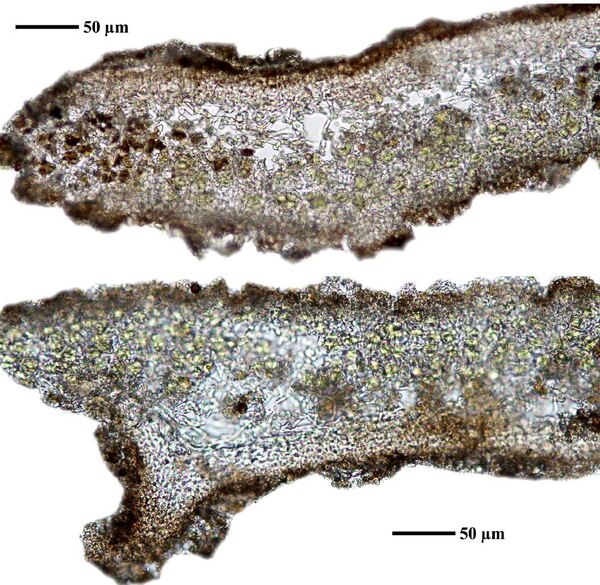

Felix Schumm - CC BY-SA 4.0
[GZU 165-88], Afghanistan, Prov. Kabul, Paghman Gebirge, oberhalb des Ortes Paghman, an der Talgabelung Cap-Darrah und Rast-Darrah, linke Talseite, 68°56’ E, 34°37’ N, 2550 m. An Silikatfelsen; gehemmte rasige Wuchsform. Leg. M. Steiner, 30.05.1970, det. E. A. Davydov, 10.2017.
Ursprünglich von J. Poelt (?) als cf. Umbilicaria aprina Nyl.
bestimmt
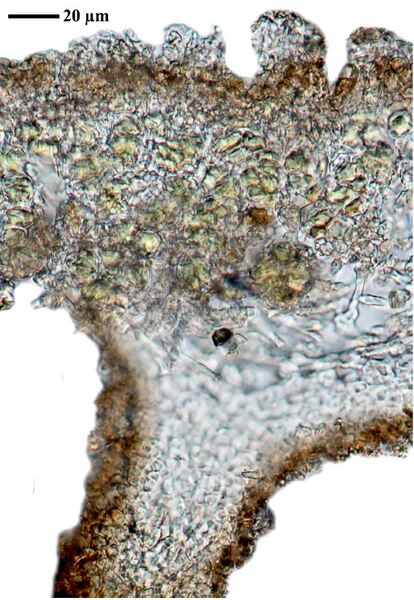

Felix Schumm - CC BY-SA 4.0
[GZU 165-88], Afghanistan, Prov. Kabul, Paghman Gebirge, oberhalb des Ortes Paghman, an der Talgabelung Cap-Darrah und Rast-Darrah, linke Talseite, 68°56’ E, 34°37’ N, 2550 m. An Silikatfelsen; gehemmte rasige Wuchsform. Leg. M. Steiner, 30.05.1970, det. E. A. Davydov, 10.2017.
Ursprünglich von J. Poelt (?) als cf. Umbilicaria aprina Nyl.
bestimmt
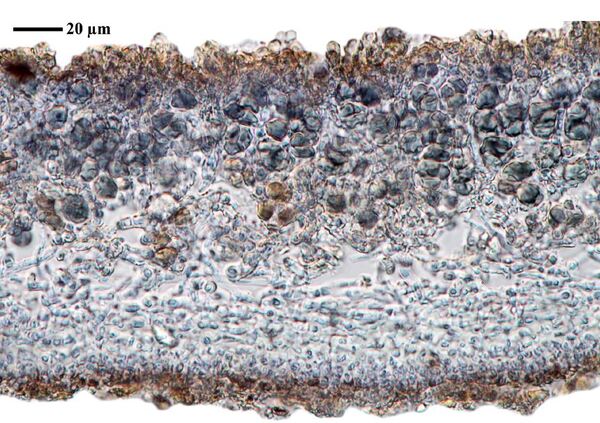

Felix Schumm - CC BY-SA 4.0
[GZU 165-88], Afghanistan, Prov. Kabul, Paghman Gebirge, oberhalb des Ortes Paghman, an der Talgabelung Cap-Darrah und Rast-Darrah, linke Talseite, 68°56’ E, 34°37’ N, 2550 m. An Silikatfelsen; gehemmte rasige Wuchsform. Leg. M. Steiner, 30.05.1970, det. E. A. Davydov, 10.2017.
Ursprünglich von J. Poelt (?) als cf. Umbilicaria aprina Nyl.
bestimmt


Felix Schumm - CC BY-SA 4.0
[GZU 165-88], Afghanistan, Prov. Kabul, Paghman Gebirge, oberhalb des Ortes Paghman, an der Talgabelung Cap-Darrah und Rast-Darrah, linke Talseite, 68°56’ E, 34°37’ N, 2550 m. An Silikatfelsen; gehemmte rasige Wuchsform. Leg. M. Steiner, 30.05.1970, det. E. A. Davydov, 10.2017.
Ursprünglich von J. Poelt (?) als cf. Umbilicaria aprina Nyl.
bestimmt
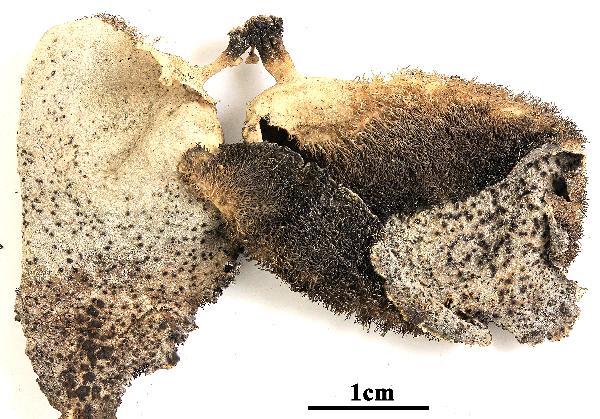

Felix Schumm - CC BY 4.0
[KU698], Svalbard. Spitzbergen. Ny-London, the opposite shore of
Ny-Ålesund, Kongsfjorden. On rocks, 0-50 m. Leg. H. Kashiwadani
(no. 23041), 20.07.1985, det. H. Kashiwadani. EX S. KUROKAWA AND
H. KASHIWADANI: LICHENES RARIORES ET CRITICI EXSICCATI NR. 698.
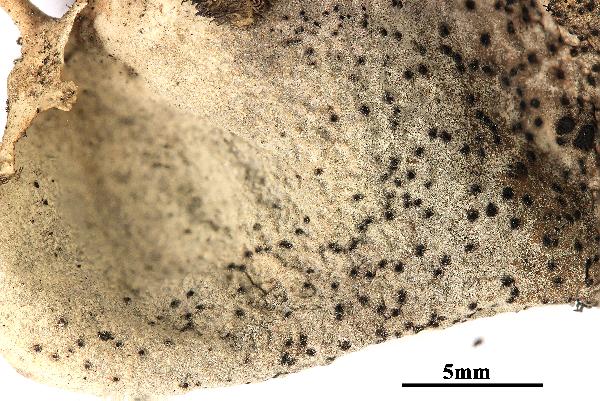

Felix Schumm - CC BY 4.0
[KU698], Svalbard. Spitzbergen. Ny-London, the opposite shore of
Ny-Ålesund, Kongsfjorden. On rocks, 0-50 m. Leg. H. Kashiwadani
(no. 23041), 20.07.1985, det. H. Kashiwadani. EX S. KUROKAWA AND
H. KASHIWADANI: LICHENES RARIORES ET CRITICI EXSICCATI NR. 698.
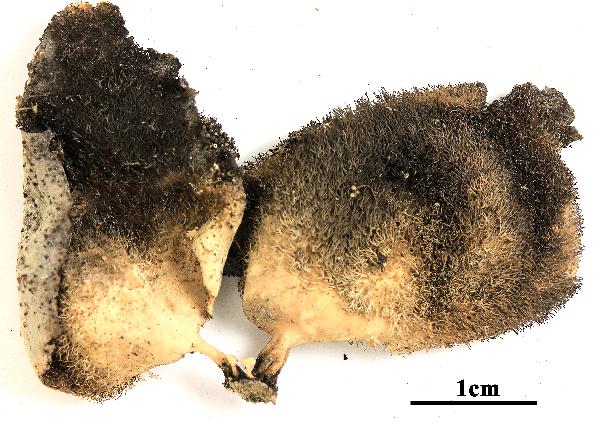

Felix Schumm - CC BY 4.0
[KU698], Svalbard. Spitzbergen. Ny-London, the opposite shore of
Ny-Ålesund, Kongsfjorden. On rocks, 0-50 m. Leg. H. Kashiwadani
(no. 23041), 20.07.1985, det. H. Kashiwadani. EX S. KUROKAWA AND
H. KASHIWADANI: LICHENES RARIORES ET CRITICI EXSICCATI NR. 698.
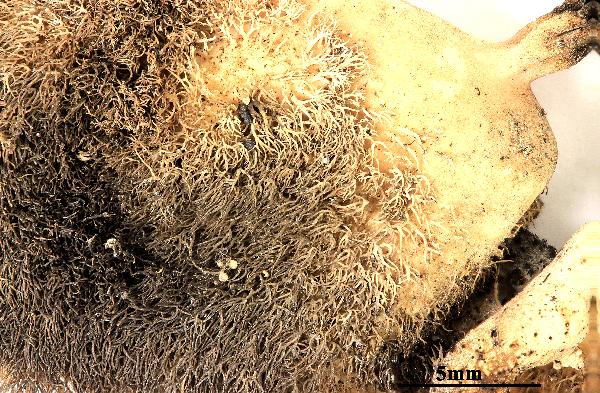

Felix Schumm - CC BY 4.0
[KU698], Svalbard. Spitzbergen. Ny-London, the opposite shore of
Ny-Ålesund, Kongsfjorden. On rocks, 0-50 m. Leg. H. Kashiwadani
(no. 23041), 20.07.1985, det. H. Kashiwadani. EX S. KUROKAWA AND
H. KASHIWADANI: LICHENES RARIORES ET CRITICI EXSICCATI NR. 698.


Felix Schumm - CC BY 4.0
[VZ2147], U.R.S.S. Asia centralis, Kirghiza: montes Titan-shan, iugum
Kirghizki khrebet, in valle fluminis Ala-Archa, 37 km ad australem ab
oppido Frunze, 2000-2200 m. Ad saxa silicea. Leg: Vašák, 29.04.1986,
det. A. V zda. EX A. V ZDA: LICHENES SELECTI EXSICCATI NR, 2147.
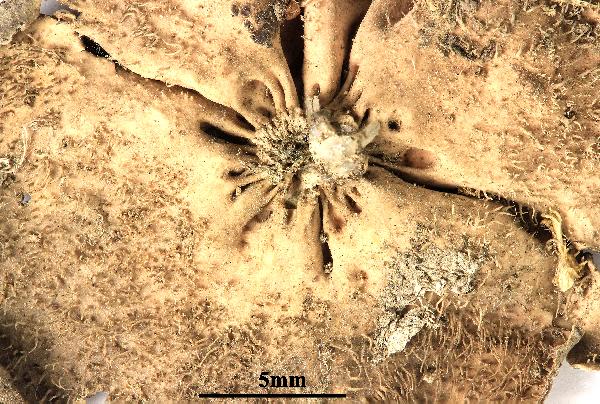

Felix Schumm - CC BY 4.0
[VZ2147], U.R.S.S. Asia centralis, Kirghiza: montes Titan-shan, iugum
Kirghizki khrebet, in valle fluminis Ala-Archa, 37 km ad australem ab
oppido Frunze, 2000-2200 m. Ad saxa silicea. Leg: Vašák, 29.04.1986,
det. A. V zda. EX A. V ZDA: LICHENES SELECTI EXSICCATI NR, 2147.
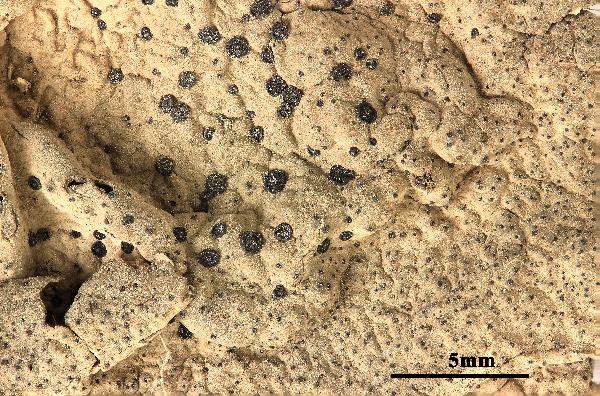

Felix Schumm - CC BY 4.0
[VZ2147], U.R.S.S. Asia centralis, Kirghiza: montes Titan-shan, iugum
Kirghizki khrebet, in valle fluminis Ala-Archa, 37 km ad australem ab
oppido Frunze, 2000-2200 m. Ad saxa silicea. Leg: Vašák, 29.04.1986,
det. A. V zda. EX A. V ZDA: LICHENES SELECTI EXSICCATI NR, 2147.

Frey E. 1933. Cladoniaceae (unter Ausschluß ded Gattung Cladonia) und Umbilicariaceae. In: Rabenhrst’s Kryptogamenflora von Deutschland, Österreich und der Schweiz. 15: 1-208.
var. meylani
Growth form: Foliose, umbilicate
Substrata: rocks
Photobiont: green algae other than Trentepohlia
Reproductive strategy: mainly sexual
In underhangs rarely wetted by rain
Commonnes-rarity: (info)
Alpine belt: very rare
Subalpine belt: absent
Oromediterranean belt: absent
Montane belt: absent
Submediterranean belt: absent
Padanian area: absent
Humid submediterranean belt: absent
Humid mediterranean belt: absent
Dry mediterranean belt: absent

Predictive model
| Herbarium samples |


Felix Schumm - CC BY 4.0
[VZ2147], U.R.S.S. Asia centralis, Kirghiza: montes Titan-shan, iugum Kirghizki khrebet, in valle fluminis Ala-Archa, 37 km ad australem ab oppido Frunze, 2000-2200 m. Ad saxa silicea. Leg: Vašák, 29.04.1986, det. A. V zda. EX A. V ZDA: LICHENES SELECTI EXSICCATI NR, 2147.


Curtis Randall Björk – CC BY-SA 4.0
Washington, Chelan County, Wenatchee Mountains Date: 2013-05-09 On cliff in dry conifer forest on slope


Felix Schumm - CC BY-SA 4.0
[GZU 165-88], Afghanistan, Prov. Kabul, Paghman Gebirge, oberhalb des Ortes Paghman, an der Talgabelung Cap-Darrah und Rast-Darrah, linke Talseite, 68°56’ E, 34°37’ N, 2550 m. An Silikatfelsen; gehemmte rasige Wuchsform. Leg. M. Steiner, 30.05.1970, det. E. A. Davydov, 10.2017.
Ursprünglich von J. Poelt (?) als cf. Umbilicaria aprina Nyl.
bestimmt


P.L. Nimis; Owner: Department of Life Sciences, University of Trieste
Herbarium: TSB (9936)
2001/12/05


Felix Schumm - CC BY-SA 4.0
[GZU 165-88], Afghanistan, Prov. Kabul, Paghman Gebirge, oberhalb des Ortes Paghman, an der Talgabelung Cap-Darrah und Rast-Darrah, linke Talseite, 68°56’ E, 34°37’ N, 2550 m. An Silikatfelsen; gehemmte rasige Wuchsform. Leg. M. Steiner, 30.05.1970, det. E. A. Davydov, 10.2017.
Ursprünglich von J. Poelt (?) als cf. Umbilicaria aprina Nyl.
bestimmt


Felix Schumm - CC BY-SA 4.0
[GZU 165-88], Afghanistan, Prov. Kabul, Paghman Gebirge, oberhalb des Ortes Paghman, an der Talgabelung Cap-Darrah und Rast-Darrah, linke Talseite, 68°56’ E, 34°37’ N, 2550 m. An Silikatfelsen; gehemmte rasige Wuchsform. Leg. M. Steiner, 30.05.1970, det. E. A. Davydov, 10.2017.
Ursprünglich von J. Poelt (?) als cf. Umbilicaria aprina Nyl.
bestimmt


Felix Schumm - CC BY-SA 4.0
[GZU 165-88], Afghanistan, Prov. Kabul, Paghman Gebirge, oberhalb des Ortes Paghman, an der Talgabelung Cap-Darrah und Rast-Darrah, linke Talseite, 68°56’ E, 34°37’ N, 2550 m. An Silikatfelsen; gehemmte rasige Wuchsform. Leg. M. Steiner, 30.05.1970, det. E. A. Davydov, 10.2017.
Ursprünglich von J. Poelt (?) als cf. Umbilicaria aprina Nyl.
bestimmt


Felix Schumm - CC BY-SA 4.0
[GZU 165-88], Afghanistan, Prov. Kabul, Paghman Gebirge, oberhalb des Ortes Paghman, an der Talgabelung Cap-Darrah und Rast-Darrah, linke Talseite, 68°56’ E, 34°37’ N, 2550 m. An Silikatfelsen; gehemmte rasige Wuchsform. Leg. M. Steiner, 30.05.1970, det. E. A. Davydov, 10.2017.
Ursprünglich von J. Poelt (?) als cf. Umbilicaria aprina Nyl.
bestimmt


Felix Schumm - CC BY 4.0
[KU698], Svalbard. Spitzbergen. Ny-London, the opposite shore of Ny-Ålesund, Kongsfjorden. On rocks, 0-50 m. Leg. H. Kashiwadani (no. 23041), 20.07.1985, det. H. Kashiwadani. EX S. KUROKAWA AND H. KASHIWADANI: LICHENES RARIORES ET CRITICI EXSICCATI NR. 698.


Felix Schumm - CC BY 4.0
[KU698], Svalbard. Spitzbergen. Ny-London, the opposite shore of Ny-Ålesund, Kongsfjorden. On rocks, 0-50 m. Leg. H. Kashiwadani (no. 23041), 20.07.1985, det. H. Kashiwadani. EX S. KUROKAWA AND H. KASHIWADANI: LICHENES RARIORES ET CRITICI EXSICCATI NR. 698.


Felix Schumm - CC BY 4.0
[KU698], Svalbard. Spitzbergen. Ny-London, the opposite shore of Ny-Ålesund, Kongsfjorden. On rocks, 0-50 m. Leg. H. Kashiwadani (no. 23041), 20.07.1985, det. H. Kashiwadani. EX S. KUROKAWA AND H. KASHIWADANI: LICHENES RARIORES ET CRITICI EXSICCATI NR. 698.


Felix Schumm - CC BY 4.0
[KU698], Svalbard. Spitzbergen. Ny-London, the opposite shore of Ny-Ålesund, Kongsfjorden. On rocks, 0-50 m. Leg. H. Kashiwadani (no. 23041), 20.07.1985, det. H. Kashiwadani. EX S. KUROKAWA AND H. KASHIWADANI: LICHENES RARIORES ET CRITICI EXSICCATI NR. 698.


Felix Schumm - CC BY 4.0
[VZ2147], U.R.S.S. Asia centralis, Kirghiza: montes Titan-shan, iugum Kirghizki khrebet, in valle fluminis Ala-Archa, 37 km ad australem ab oppido Frunze, 2000-2200 m. Ad saxa silicea. Leg: Vašák, 29.04.1986, det. A. V zda. EX A. V ZDA: LICHENES SELECTI EXSICCATI NR, 2147.


Felix Schumm - CC BY 4.0
[VZ2147], U.R.S.S. Asia centralis, Kirghiza: montes Titan-shan, iugum Kirghizki khrebet, in valle fluminis Ala-Archa, 37 km ad australem ab oppido Frunze, 2000-2200 m. Ad saxa silicea. Leg: Vašák, 29.04.1986, det. A. V zda. EX A. V ZDA: LICHENES SELECTI EXSICCATI NR, 2147.


Felix Schumm - CC BY 4.0
[VZ2147], U.R.S.S. Asia centralis, Kirghiza: montes Titan-shan, iugum Kirghizki khrebet, in valle fluminis Ala-Archa, 37 km ad australem ab oppido Frunze, 2000-2200 m. Ad saxa silicea. Leg: Vašák, 29.04.1986, det. A. V zda. EX A. V ZDA: LICHENES SELECTI EXSICCATI NR, 2147.

 INDEX FUNGORUM
INDEX FUNGORUM
 GBIF
GBIF
 DOLICHENS
DOLICHENS



